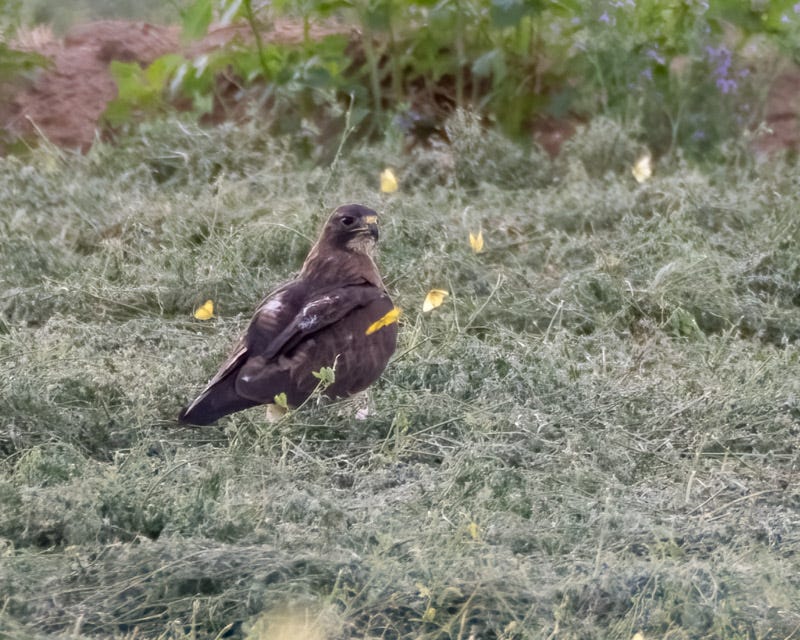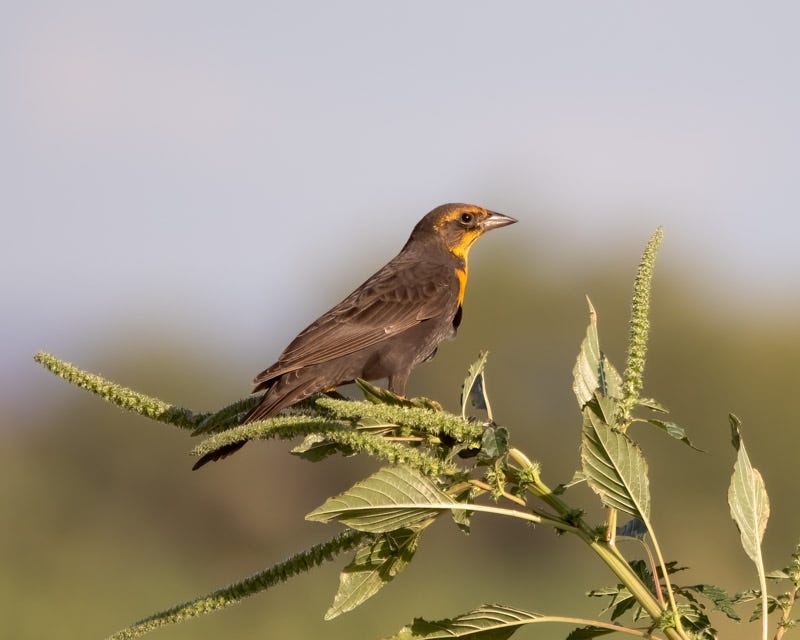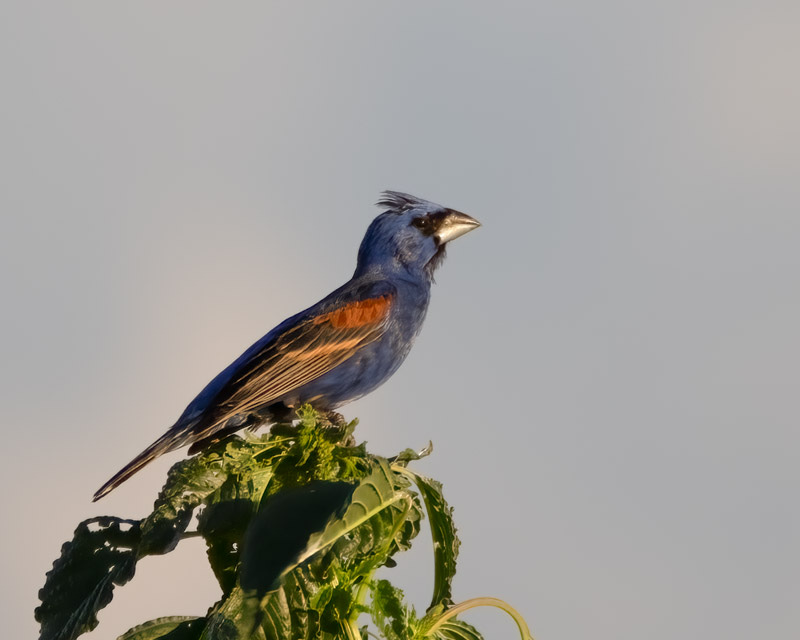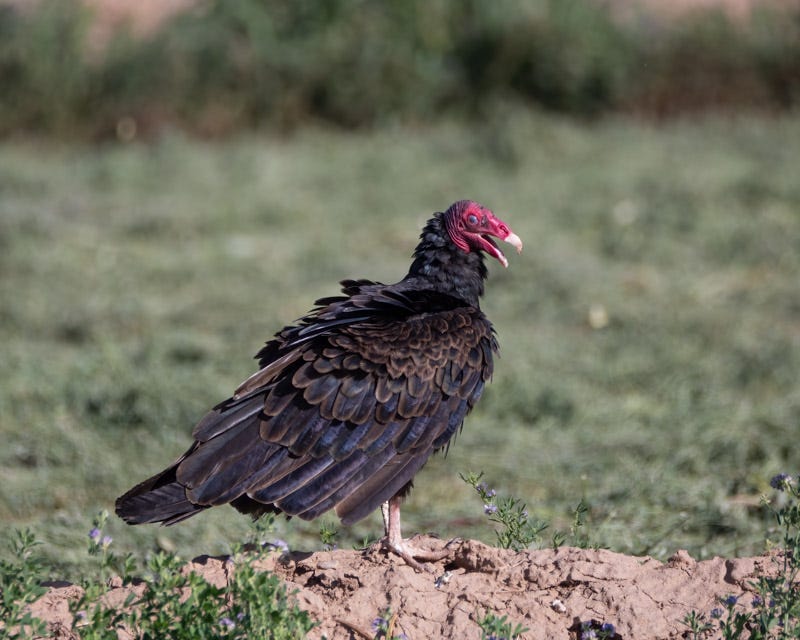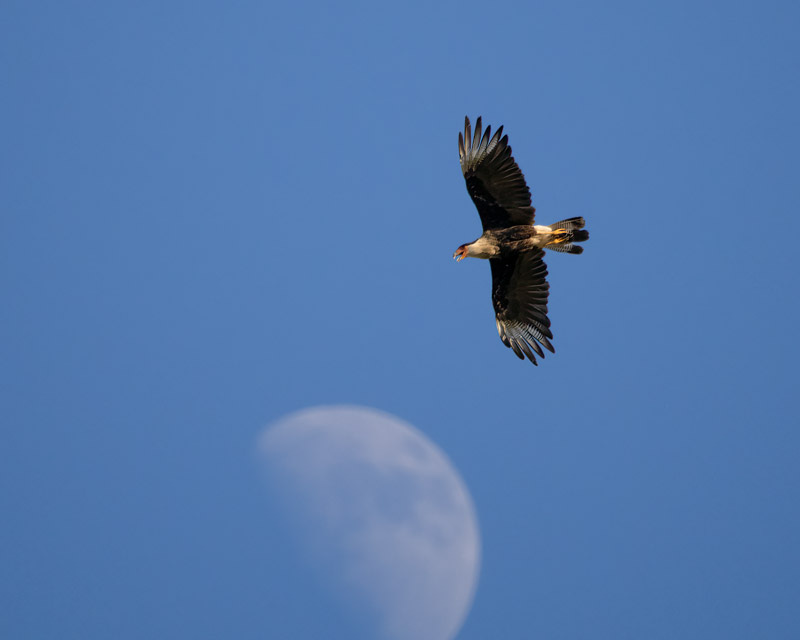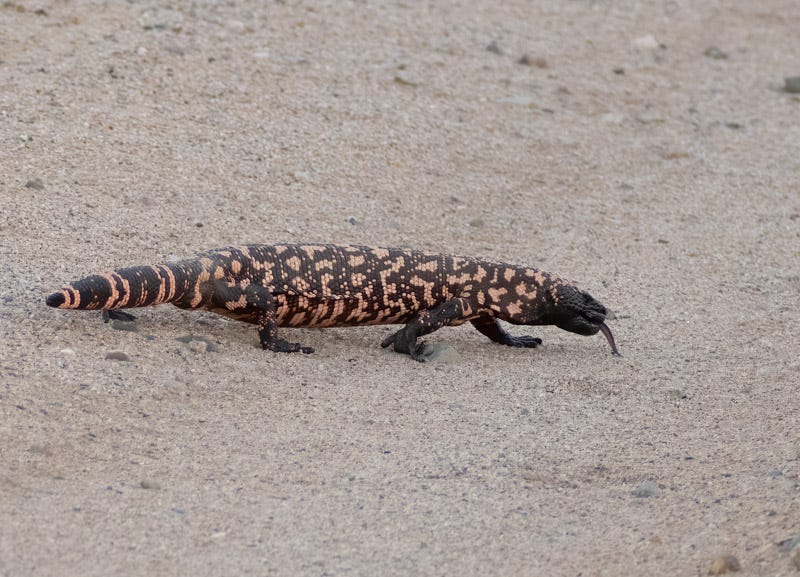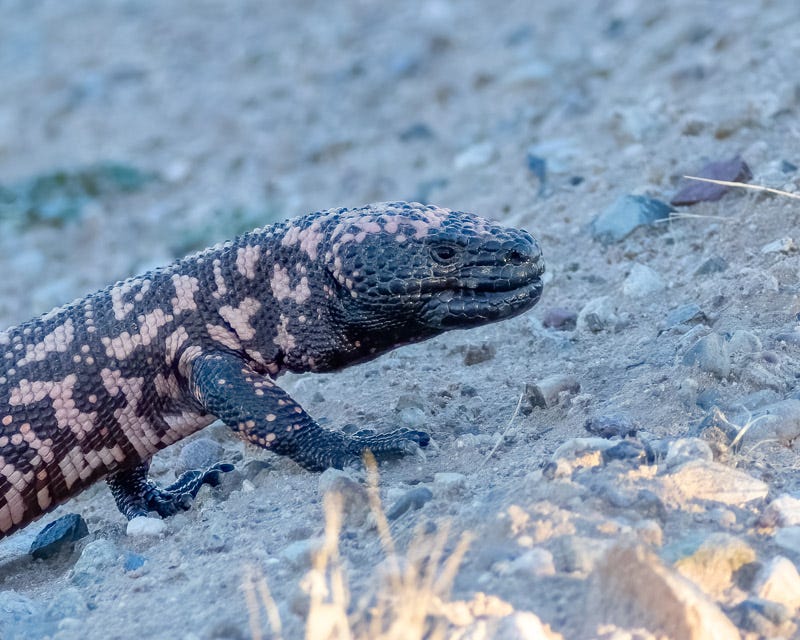An Afternoon at a Farm in Marana
Aug. 18: There is rich farmland just a short drive from Tucson
Thanks to the waters of the Santa Cruz River, the area we now call Marana has been home to agriculture by humans for thousands of years. The modern City of Marana was incorporated in 1977 and agriculture is still a major part of the larger Marana area. Farming is continuous north from Marana through Pinal County and the area known as Santa Cruz Flats, through Eloy and Casa Grande and further north. This week, I visited one farm in the south of Marana with a friend.
There were fields of alfalfa, some cut and some uncut. The fields were alive with innumerable yellow butterflies. Known as 'Alfalfa Butterflies", their real name is Orange Sulphur. Alfalfa is a host plant for the caterpillars of the Orange Sulphur. Sitting among a cloud of Orange Sulphurs in a field of cut alfalfa was a Swainson's Hawk. Swainson's are beginning to come through our area on their way south to their wintering home in Argentina.
On the earthen berms between each field were very large 'weeds', an invasive plant called Palmer Amaranth. The Palmer Amaranth offered both seeds and perches for the many birds that were feeding in the fields. A juvenile Yellow-headed Blackbird perched on one plant. https://www.birdnote.org/listen/shows/red-wings-and-yellow-heads
On another a female American Kestrel briefly perched. Although Kestrels are present in our area year-round, there are more to be seen during the winter when northern populations come south. These are very pretty falcons.
I think I've seen more Blue Grosbeaks this summer than I have in any other year. The male's color never ceases to impress me and that large silver bill looks classy.
Even when we couldn't see Blue Grosbeaks due to the tall alfalfa and weeds, we could hear them. Occasionally a Blue Grosbeak, like the one above, sang while we watched! https://www.bird-sounds.net/blue-grosbeak/
There were very many Common Ravens at the farm that afternoon accompanied by many Turkey Vultures. I believe they were attracted there to pick through all of the invertebrates and rodents that the farm equipment exposed when the alfalfa was being cut. Although Turkey Vultures do not boast a very large fan club, they really are special birds. In the sky, they look black, but close-up you can see the browns in their feathers. This "TV" had its nictitating membrane closed over its eyes. https://tinyurl.com/y4dbmebz
At one point, a Crested Caracara took off from a distant field and circled high over the farm. It would periodically pass by the moon that was out in the late afternoon.
We left before sunset and on the way home came across a Gila Monster. Apparently the Gila Monster was crossing the road to get to the other side. https://www.desertmuseum.org/kids/oz/long-fact-sheets/Gila%20Monster.php
Gila Monsters swing their tail when they walk and will use their tongue to pick up scents in the air. This fellow was moving very quickly and deliberately.
He reached the edge of the road and moved into bright sunlight. Soon, he disappeared into a hole at the side of the road.
There are interesting things to see outside of the urban areas of Pima County!!


